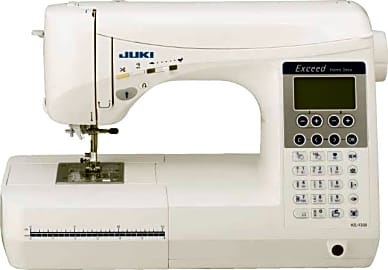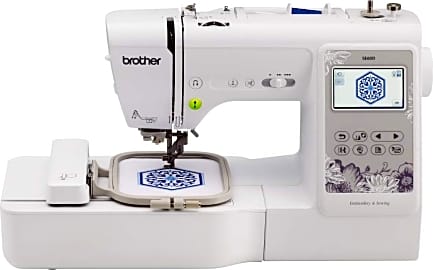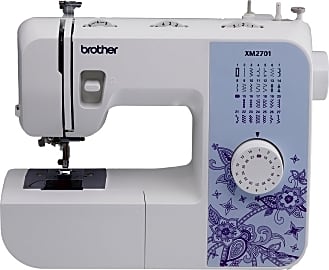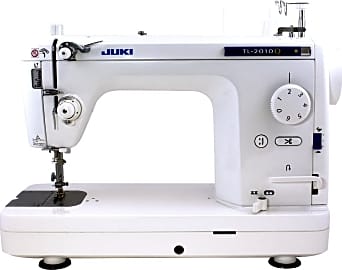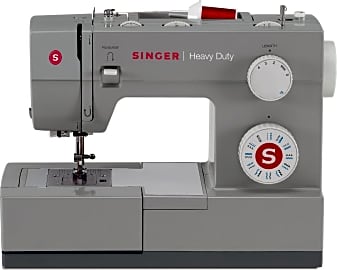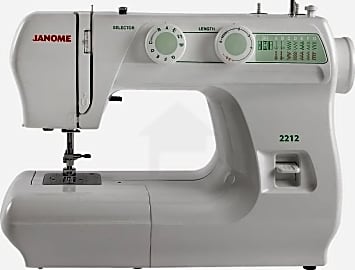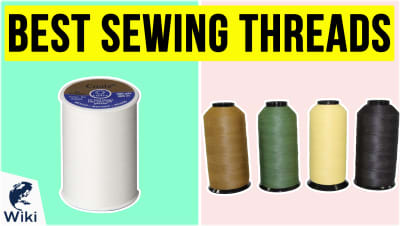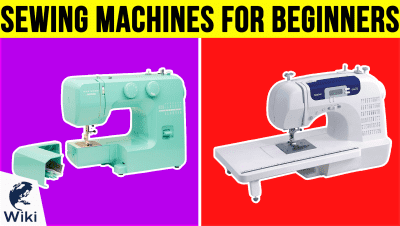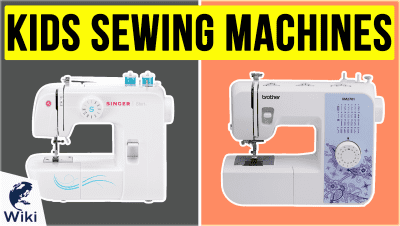The 10 Best Sewing Machines

This wiki has been updated 40 times since it was first published in May of 2015. Whether you’re a quilter, a professional seamstress, or a casual crafter, one of these high-quality sewing machines will let you turn all your design ideas into reality and make repairs easily. We’ve included everything from entry-level models with basic features that are easy for beginners to use to heavy-duty, feature-packed options that will keep even the most innovative tailors happy. When users buy our independently chosen editorial selections, we may earn commissions to help fund the Wiki.
Editor's Notes
November 02, 2020:
With all three Janome models included in our last ranking having been discontinued, we introduced a newer entry-level machine from the company, the Janome 2212, in place of the comparably user-friendly MOD-19, which shares many of its same useful features. We fleshed out the list with some slightly different choices that still offer versatility and efficiency, including the computerized Janome 4120QDC and the Brother SE600, a combination embroiderer.
The Singer Quantum Stylist model included in our previous list was pulled in favor of a slightly different version of the same machine, the Singer Quantum Stylist 9960, which has most of the same handy features and then some, and is available for a fraction of the price of the previous model. Because of this added bang for your buck, we moved this one several spots up the list as well.
Overall, some newer models offering greater diversity of features (without sacrificing practicality or user-friendliness) displaced a few of the more basic beginner-friendly machines previously included in this selection, which are still well-represented here.
November 20, 2019:
We've opted to remove the now-discontinued Janome Magnolia 7318 at this time, as well as the Brother Project Runway, which has, perhaps ironically, become harder to find than the Brother Project Runway Limited Edition. This latter is budget-appropriate for many beginners but has more features than you'd find on even less expensive machines, like the Janome MOD-19. The MOD-19 is still a good choice, however, especially for absolute newbies who might become overwhelmed with too many choices and settings.
As for top picks, we've added the updated version of the CS6000i, the Brother CS7000i. It's a great value for the cost and offers an extra 10 built-in stitches over the previous model and 10 presser feet to the earlier version's nine. But we still like the Janome DC5100 and its wide range of features, including the needle up/down memory and its top-notch tensioning that works with all kinds of sewing thread. Finally, we kept two Singer models, the Singer Quantum Stylist and Singer 4423, even though many criticize Singer for a decline in quality. The brand retains a number of fans, however, and if you're one of them, these two are worth a look.
Special Honors
Pfaff Smarter 260C The Pfaff Smarter 260C does indeed live up to its name, from the incredibly simple direct stitch selection to the tie-off button that makes finishing a snap. It also boasts helpful safety features to protect both you and it, including a presser foot sensor that won't let the machine operate when the foot is up. pfaff.com
Bernina 330 For the creative types who don't want to be constrained by pre-set stitches, the Bernina 330 is a good fit thanks to a generous 30-stitch memory. It costs more than an absolute beginner might want to spend, perhaps, but for those who are looking for a step-up model, it's definitely one to consider. bernina.com
Husqvarna Viking Jade 20 The Husqvarna Viking Jade 20 is surprisingly affordable given its features and quality, with 29 needle positions, drop feed teeth, and plenty of eye-catching decorative stitches. The machine itself is quite attractive, too, with a sleek, modern style that you won't want to hide away in a closet. husqvarnaviking.com
The Whole Is Greater Than The Sum Of Its Parts
The needle threads then form parallel rows, while the looper threads cross back and forth along those rows.
Imagine the sight of a torn sweater and the appreciation experienced when a family member takes the time to sit in front of a sewing machine to put these torn pieces back together again. This image of the sewing machine and its function to both manipulate and repair fabrics is the main focus of discussion.
Whereas knitting involves creating independent shapes of fabric from scratch using a set of connected loops from different colored yarns, a sewing machine can be used to stitch these individually-shaped pieces together using thread to form the entire garment. This is accomplished by allowing fabrics to glide in and out of the machine without the inconvenience of a needle, thread, or thimble getting in the way or causing injury to one's fingers. With a sewing machine, the objects ordinarily used for hand stitching are integrated into the machine's casing and design, which automates the sewing process while making it more efficient and safe for the operator.
The four most common types of sewing machines include mechanical, electronic, computerized, and overlocker. Mechanical machines are the oldest type and operate through use of a side wheels, cranks, and dials requiring manual effort from the operator. An electronic machine has a single electric motor powering its needle while the operator controls the machine's speed using an integrated foot pedal. This provides the operator's hands with freedom to guide and feed fabrics through the machine for additional precision.
Electronic machines normally have side dials for choosing the desired stitch patterns and lengths. Some electronic machines are also equipped with adjustable thread tension settings. Rather than using dials and buttons, computerized sewing machines have digital displays with the ability to store favorite or previously-used stitch patterns. Some computerized machines have built-in universal serial bus (USB) ports for creating custom designs and saving them for future use. Overlocker machines are strictly designed to add professional finishes to hems and seams.
Depending on the machine, both plain and patterned stitches with dozens of recognized patterns are possible. Many patterns make use of multiple threads for a stitch. Plain stitches include the chainstitch, lockstitch, overlock, and coverstitch. The chainstitch is the oldest type with the most drawbacks because it isn't capable of self-locking. This means that if its thread breaks at any point during the sewing process, the entire length of stitching comes undone. Secondly, if the direction of sewing is changed from one stitch to the next using this method, the process could fail.
The lockstitch is the most common for household sewing machines and is characterized by two threads with one being passed through a needle and the other coming from a bobbin or shuttle. Each single thread stays on the same side of the material that is sewn until it is interlaced with the opposing thread at each needle hole through use of a bobbin driver. The overlock stitch uses two to four threads for garment seams in knit and stretchy fabrics. The coverstitch is formed by at least two needles and one or two loopers (thread holders) that manipulate thread both above and below the material. The needle threads then form parallel rows, while the looper threads cross back and forth along those rows. This results in a grid-like stitch pattern.
Sewing To Your Heart's Content
When searching for the best sewing machine, one's profession should be the first consideration. Should you be using the machine for professional repair or garment fabrication, then a machine with an extended working table will definitely come in handy, particularly when sewing large garments.
For this reason, it is important to be knowledgeable about which feet will work with your machine and to be sure you have a wide enough variety.
If you feel that automation will make your job easier, then spring for a computerized model with plenty of preprogrammed stitches. You will appreciate having as much customization available to you as possible so that you're equipped to handle whatever your customers may need.
If the machine can accept additional custom stitches, then all the better to choose a computerized model with a digital readout that can accept a USB device. The machine should have plenty of available memory for saving your designs as well. Some computerized machines even leverage audio and visual sewing guides if you're new to the craft.
The types of presser feet with which your machine is compatible will also determine the degree of customization you can accomplish. For this reason, it is important to be knowledgeable about which feet will work with your machine and to be sure you have a wide enough variety.
A Brief History Of Sewing Machines
The first practical patent for a mechanical sewing machine was issued to Charles Fredrick Weisenthal in 1755. It described a needle designed for a machine, but nothing more. English inventor and cabinet maker Thomas Saint invented the first sewing machine design thirty-five years later in 1790, but it was never successfully marketed.
By 1846, American inventor Elias Howe received the very first American patent for his lockstitch mechanism.
The first fully functional sewing machine was invented in 1829 by French tailor Barthélemy Thimonnier. Thimonnier's machine used a single thread and a hooked needle that made the same chainstitch used for embroidery. The patent for Thimonnier's machine was issued in 1830. That same year, Thimonnier opened the world's first machine-based clothing manufacturing company to create uniforms for the French army. Unfortunately, his factory was burnt down by workers fearful of losing their livelihood upon the grant of his patent.
By 1846, American inventor Elias Howe received the very first American patent for his lockstitch mechanism. However, Howe experienced trouble marketing his product and defending the patent against competition from other innovators, including Isaac Singer (inventor of the up-and-down motion mechanism).
Clothing manufacturers were the first major customers for the sewing machine and used the device to produce the first ready-to-wear clothing. Consumer purchases for the machine became common by the 1860s. The first electric sewing machines were developed by Singer Sewing Corporation in 1889. Throughout the course of the twentieth century, the electric machine continued to grow in popularity with its motor eventually integrated into the machine's casing.



